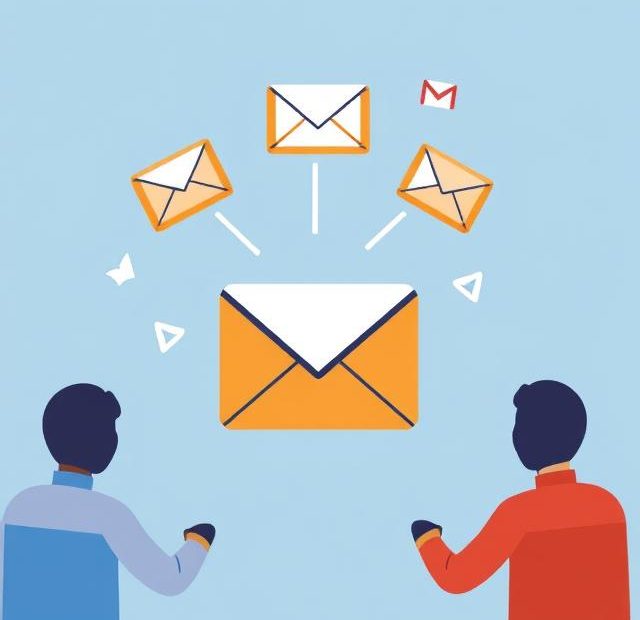In a digital world flooded with social media posts and short-form videos, email marketing for small businesses continues to prove its effectiveness in building customer relationships and generating consistent revenue. As we navigate through 2025, email remains one of the most direct, affordable, and powerful tools small businesses can use to communicate with their audience. With evolving technology, changing consumer behavior, and tighter privacy regulations, here’s how you can harness email marketing effectively this year.
Why Email Marketing Still Works in 2025
Despite the rise of newer platforms, email marketing offers unique advantages that social media can’t match:
-
Ownership of Audience: Unlike social platforms where algorithms control visibility, your email list is yours. You directly reach the inbox.
-
Personalization: Email allows hyper-targeted content based on user behavior, purchase history, or interests.
-
Higher ROI: According to recent reports, email marketing generates an average ROI of $40 for every $1 spent — higher than any other digital channel.
For small businesses, email marketing is budget-friendly and scalable. It helps in nurturing leads, promoting new offers, and staying top-of-mind with customers.
Step-by-Step Strategy for Success
1. Build a High-Quality Email List
Success starts with the right audience. In 2025, list-building is less about quantity and more about quality.
-
Use website pop-ups offering lead magnets like discounts, eBooks, or free trials.
-
Run contests or giveaways on social media to capture emails.
-
Ask customers to sign up during checkout, both online and in-store.
Always use double opt-in to ensure genuine interest and comply with privacy laws like GDPR and the updated U.S. Data Protection Act 2025.
2. Use Smart Segmentation
Generic mass emails are outdated. Instead, divide your list based on:
-
Customer behavior (e.g., cart abandoners, frequent buyers)
-
Demographics (e.g., location, age)
-
Engagement level (e.g., active vs inactive subscribers)
Segmenting helps you send the right message to the right person, increasing open rates and conversions.
3. Personalization is Key
In 2025, AI-powered platforms allow deeper personalization. Go beyond using the subscriber’s name.
-
Recommend products based on past purchases.
-
Send birthday discounts or milestone rewards.
-
Create dynamic content that changes based on user preferences.
Personalization builds trust and improves the user experience, crucial for small businesses competing with big brands.
4. Mobile-First Design
Over 70% of emails are now opened on mobile devices. Ensure your emails:
-
Use responsive design
-
Have concise subject lines
-
Feature tappable buttons
-
Avoid large images or long text blocks
A bad mobile experience can lead to unsubscribes or missed opportunities.
5. Craft Compelling Subject Lines
Your subject line determines whether your email gets opened or ignored. In 2025, the most effective subject lines:
-
Are short (40–50 characters)
-
Use emojis sparingly
-
Create curiosity or urgency
-
Avoid spammy words like “Free,” “Buy Now,” or “Guaranteed”
Test different versions (A/B testing) to see what resonates best with your audience.
Tools and Platforms to Use in 2025
Email marketing platforms are more advanced than ever. Some top tools for small businesses include:
-
Mailchimp – Easy-to-use with automation features and AI subject line suggestions.
-
Brevo (formerly Sendinblue) – Great for transactional emails and SMS integration.
-
ConvertKit – Perfect for creators and small eCommerce businesses.
-
Moosend – Budget-friendly with robust features.
Look for platforms that offer drag-and-drop builders, automation flows, real-time analytics, and CRM integration.
Automation: Do More With Less
Automation is the secret weapon for small businesses in 2025. Set up workflows like:
-
Welcome Series: A sequence of emails for new subscribers.
-
Abandoned Cart Reminders: Bring back lost sales.
-
Re-engagement Campaigns: Win back inactive subscribers.
-
Post-purchase Follow-ups: Gather reviews and upsell.
These campaigns run in the background, saving time while maximizing results.
Track Your Performance
What gets measured gets improved. Key metrics to monitor:
-
Open Rate: Are your subject lines working?
-
Click-Through Rate (CTR): Are your CTAs engaging?
-
Conversion Rate: Are subscribers taking action?
-
Unsubscribe Rate: Are you sending too often or irrelevant content?
Use this data to tweak your campaigns and improve over time.
Best Practices in 2025
-
Stay compliant with privacy regulations (always include unsubscribe links).
-
Use clean, visually appealing templates aligned with your brand.
-
Send consistently but don’t overwhelm — once a week is a sweet spot for many.
-
Encourage replies to increase engagement and feedback.
-
Keep your list clean by removing inactive or bounced emails.
Final Thoughts
Email marketing for small businesses in 2025 is not just alive — it’s thriving. With the right tools, strategies, and consistency, you can build meaningful relationships, grow your brand, and drive more sales than ever before.
Whether you’re just starting out or refining your current strategy, the key is to focus on value, personalization, and relevance. Your customers’ inbox is still a powerful place to connect — make every email count.
Also, you can learn more about Email Marketing Tactics here.
